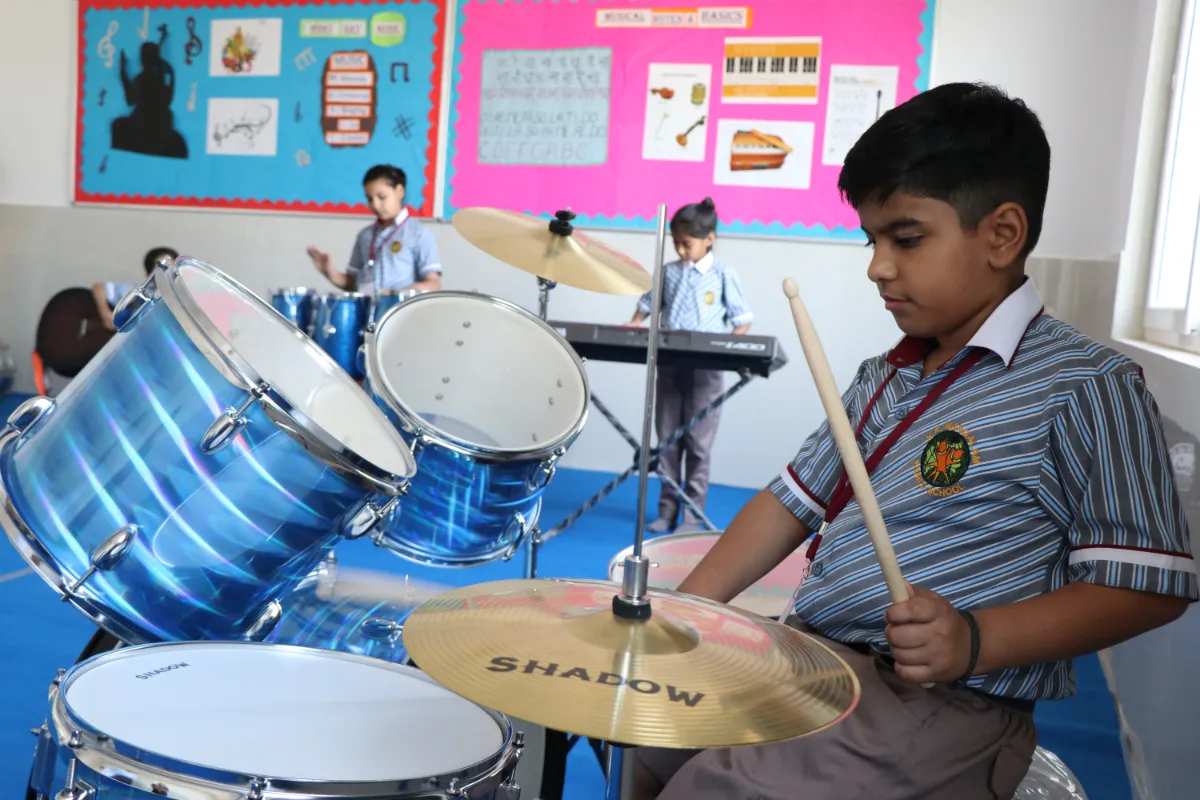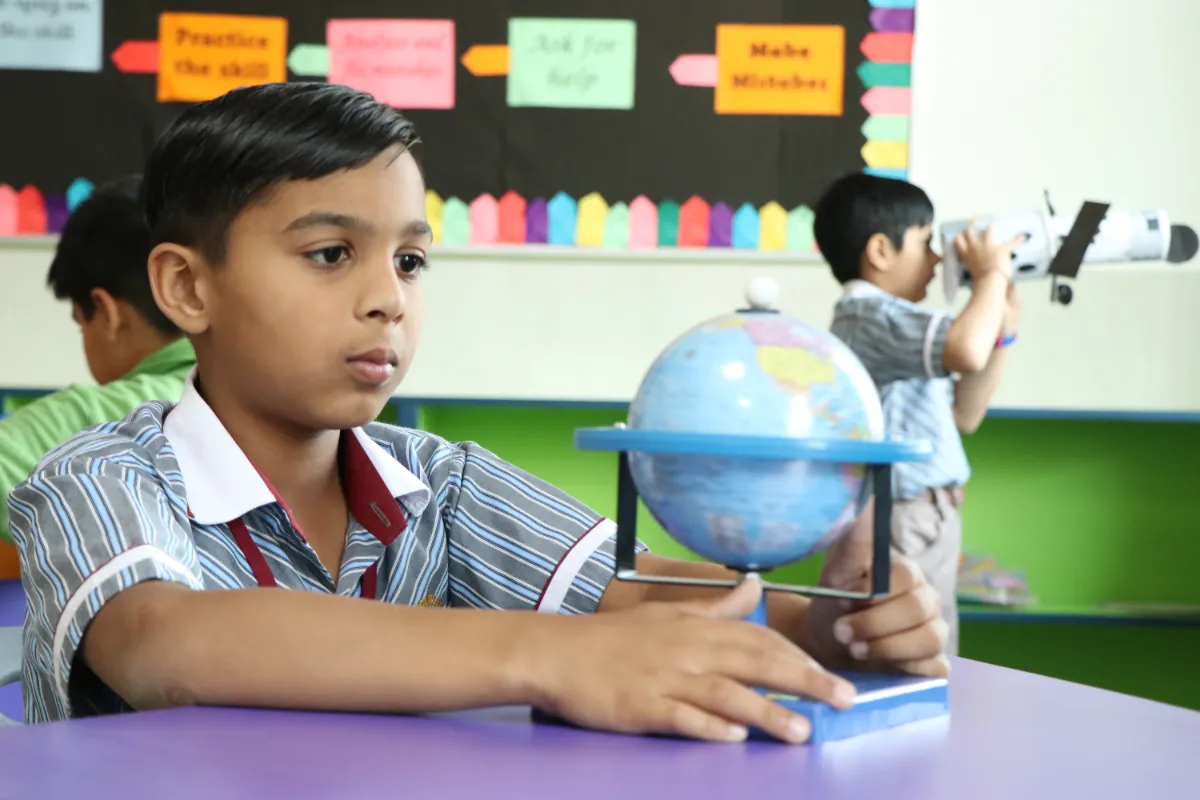K.R. Mangalam World School makes a point of educating its learners beyond the regular curriculum. Our co-curricular activities edify them with learning in discipline, fitness, team spirit and confidence and help them develop a well-rounded personality.
EXPERIENTIAL LEARNING
Experiential learning, also known as ‘Learning by Doing’, is an approach that engages students in the process of learning. Following this approach at KRM, the facilitator ensures students get fair opportunities to acquire comprehensive knowledge and evolve themselves intellectually, creatively, emotionally, socially, and physically. When students experiences learning, they apply their theoretical skills practically that enriches critical thinking and enhances logical conceptualization and self-confidence.
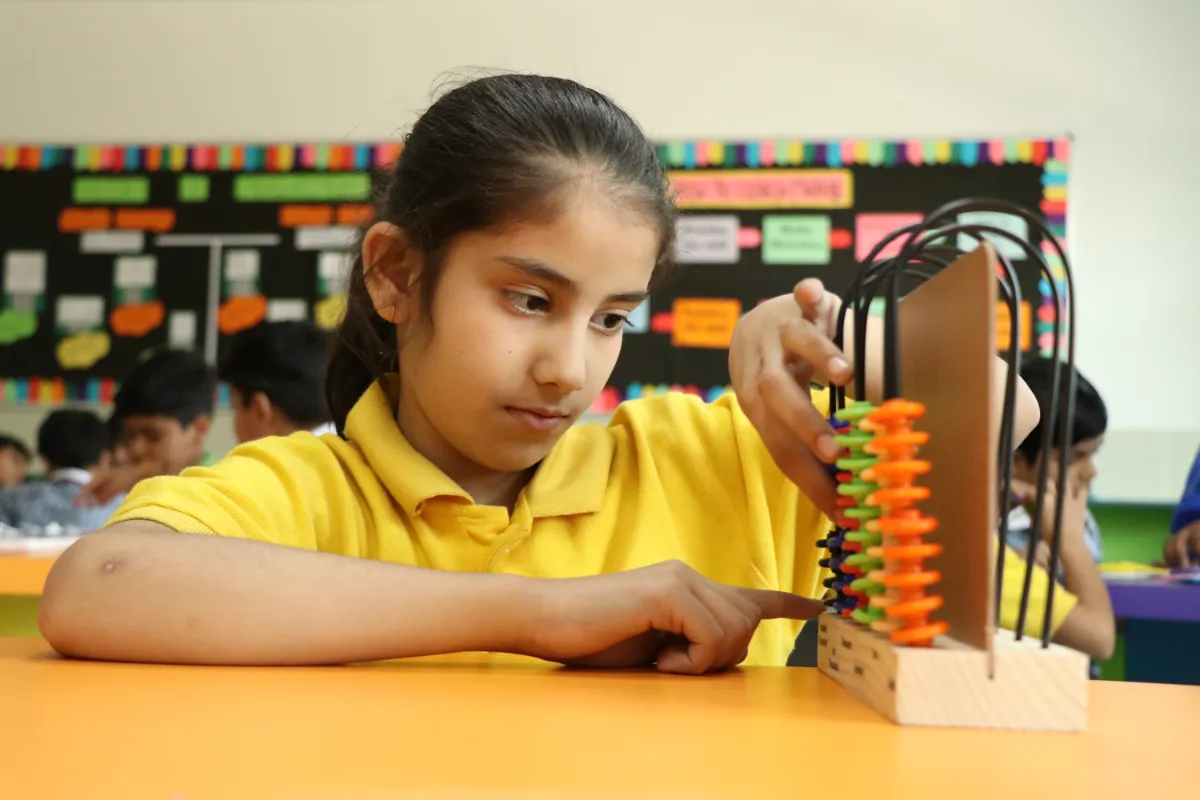
K.R. Mangalam offers Experiential learning through a plethora of activities:
- 1 Float & Sink – To reiterate the pre-number concept of heavy and light, kindergarten students were engaged in the Sink and Float activity. It encouraged them to make observations and understand that light objects float and heavy objects sink.
- 2 Active Experimentation – In Primary School, our curriculum focuses on active experimentation through activities like Role Play, Talk Show, Scavenger Hunt, Fun with Factors, Make Your Own Map, Kitchen Science, Presentation of the Seven Wonders of World, Magical Science Experiments, etc. at school.
Some of these activities are:
- 1 Budding Scientists – Students of Grade IV engaged in a series of age-appropriate experiments and interactive demonstrations that bring scientific concepts to life. These hands-on activities allow students to observe, hypothesize, and analyze outcomes, promoting a practical understanding of scientific principles.
- 2 Ad- Mad Activity– Students of Grade III demonstrated impressive improvisation, incorporating humor and catchy slogans to engage the audience. Overall, the event highlighted the students’ ability to think on their feet and deliver persuasive pitches, making it an entertaining and successful endeavor.
- 3 Little Einstein Activity- Students of Grade II engaged in a simple germination experiment where they planted seeds in soil and observed the stages of seed germination. This hands-on activity helped them understand how plants grow from seeds and the importance of water, sunlight, and nutrients.
VOCATIONAL COURSES (FINANCIAL LITERACY)
Financial literacy is a crucial life skill that empowers individuals to make informed decisions about money, enabling them to achieve financial stability and independence. As the world becomes increasingly complex and interconnected, the need to educate students about financial matters becomes even more pressing. Introducing financial literacy as a subject in schools for students of classes 6-8 can lay the foundation for a financially responsible and secure future.
- Early Inculcation of Financial Skills: Introducing financial literacy at an early age allows students to develop fundamental money management skills, such as budgeting, saving, and setting financial goals. These skills are essential for building a strong financial foundation and avoiding detrimental financial habits later in life.
- Cultivating Responsible Spending Habits: By educating students about financial concepts like needs vs. wants, prudent spending, and avoiding impulsive buying, financial literacy instills responsible spending habits from an early age. These habits will have a long-term positive impact on their financial well-being.
- Empowering Students to Understand Financial Concepts: Financial literacy classes provide students with the knowledge to understand complex financial concepts, including loans, interest rates, investments, and taxes. This understanding equips them to make informed decisions about borrowing, investing, and managing their finances effectively.
- Navigating an Evolving Financial Landscape: In today’s dynamic and technology-driven world, students need to be equipped with skills to navigate digital financial tools and services. Financial literacy classes can teach them about online banking, digital payments, and safe money management practices, ensuring they are well-prepared for the future.
- Fostering Economic and Social Responsibility: Financially literate individuals are more likely to contribute positively to the economy and society. By introducing financial literacy as a subject, schools can help nurture responsible citizens who understand the importance of saving, investing wisely, and contributing to their communities.
- Combating the Issue of Debt: Lack of financial literacy often leads to debt-related issues in adulthood. By teaching students about the consequences of debt and how to manage it responsibly, schools can play a crucial role in reducing the prevalence of financial hardships in the future.
- Encouraging Entrepreneurship and Financial Independence: Financial literacy can inspire entrepreneurial thinking and innovation. When students are educated about financial management and investment opportunities, they are better equipped to pursue entrepreneurship and attain financial independence.
Introducing financial literacy as a subject for students in classes 6-8 is a proactive step towards equipping them with essential life skills. By fostering responsible financial habits, understanding financial concepts, and encouraging economic and social responsibility, schools can empower the next generation to navigate the complexities of the modern financial landscape with confidence and prudence. Ultimately, promoting financial literacy in education will contribute to a more financially secure and prosperous society.
DESIGN THINKING AND INNOVATION
The Design Thinking and Innovation course in school aims to equip students with essential problem-solving and creative thinking skills. This course typically introduces students to the principles and methodologies of Design Thinking, emphasizing human-centered approaches to innovation. The course structure may include the following components:
- Introduction to Design Thinking: Students learn about the background and principles of Design Thinking, understanding its significance in fostering innovation and its applications across various fields.
- Empathy and User Research: This part focuses on developing empathy for users through observation, interviews, and understanding their needs and challenges. Students learn to analyze user data and insights to identify real problems worth solving.
- Problem Definition: In this stage, students learn how to formulate clear problem statements based on their empathetic understanding of users. They practice reframing problems to uncover new perspectives and opportunities.
- Ideation and Creativity: Students participate in brainstorming sessions and creative exercises to generate a wide range of ideas. The emphasis is on encouraging diverse and wild thinking to explore novel solutions.
- Prototyping and Iteration: This section teaches students how to create low-fidelity prototypes of their ideas. They learn the importance of rapid iteration and how to gather feedback for continuous improvement.
- User Testing and Feedback: Students learn how to conduct user testing to validate their prototypes and gather valuable feedback from target users. They gain insights into refining their designs based on user input.
- Collaboration and Teamwork: Design Thinking often involves teamwork, and this course emphasizes collaborative skills, effective communication, and the ability to work together to tackle complex challenges.
- Applying Design Thinking to Real-world Problems- Throughout the course, students are encouraged to apply Design Thinking principles to real-world scenarios or specific challenges, such as sustainability, social issues, or product development.
- Benefits of the Design Thinking and Innovation course: Fostering Creativity: Students develop creative thinking skills by exploring multiple ideas and approaches to problem-solving.
- Empathy and User Focus: Students learn to put themselves in users’ shoes, gaining a deeper understanding of their needs and designing solutions accordingly
- Iterative Problem-Solving: The iterative nature of Design Thinking teaches students to embrace failure as a means to learn and continuously improve their solutions.
- Collaboration and Communication: Working in teams on design projects enhances students’ teamwork and communication skills, preparing them for real-world work environments.
- Practical Application: The course enables students to apply Design Thinking principles to various fields, fostering a multidisciplinary approach to problem-solving. Overall, the Design Thinking and Innovation course empowers students with valuable skills to tackle complex challenges, drive innovation, and make a positive impact on the world around them. It prepares them to be adaptive problem solvers and forward-thinking individuals in their future careers and endeavors.
MULTIPLE INTELLIGENCES
The Multiple Intelligences approach to learning provides students with a better understanding of what they learn. We reinforce skills ranging from linguistic, numeracy, art, music, nature, spatial, and kinesthetic in students, enabling them to utilize their specific abilities. Such skills are attained through co-curricular activities but are integral to amplify the teaching curriculum in multiple ways. Infinite combinations of curricular and co-curricular skills work together to simplify one’s understanding of a concept.
For example, a child may better comprehend a concept through a visual approach while the other one may absorb the same concept through music. The Multiple Intelligences approach empowers students to explore different horizons of learning methodologies to broaden their capabilities.
When a new concept such as a number or a letter is introduced to early learners, the multiple intelligences are being nurtured through the following activities:
- (i)Linguistic Intelligence- vocabulary game, letter hunt, story narration
- (ii)Spatial Intelligence- clay molding, play pictionary, and art activities
- (iii)Logical Intelligence- puzzles and patterns
- (iv)Musical Intelligence- phonic song and rhymes
- (v)Kinesthetic Intelligence- Hopscotch
- (vi)Interpersonal Intelligence- Show N Tell
Grammar is fun
Language is the expression of ideas and words, allowing students to sort out different impressions given by the senses. Students of Grade V were exposed to various fun-based activities to widen their learning extents. They studied different parts of speech using certain examples through the ‘hopscotch’ activity. ‘Once upon a pronoun’ was another grammar learning activity to make students differentiate between pronouns by listening to their favorite stories. An activity-based grammar learning approach is an effective way to get students’ grammar on point.
Monologue – English Activity
Students of Grade VIII were given the freedom to select monologues that resonated with them. Monologues were chosen from various sources, including plays, movies, books, and original compositions. Participants were encouraged to select monologues that challenged their emotional range and allowed for meaningful character exploration. Before beginning rehearsals, participants delved into character analysis, understanding the background, motivations, emotions, and relationships of their chosen characters. They also grasped the context of the scenes in which their monologues were set, aiding in a deeper understanding of the characters’ objectives. The monologue activity culminated in live performances. Students focused on tone, intonation, body language, and eye contact to effectively convey the emotions and intentions of their characters. They were encouraged to embrace any nervousness and use it to fuel their performances.
Comic Strip Making
The students designed comic strips to depict the acts of cybercrimes. The comic strips included the conversation with Cyber Gurus suggesting solutions in a fun way. This activity aimed to enhance the concepts of cyber security amongst students and discover their artistic edge.
PROJECT BASED LEARNING
To ingrain and develop deep content knowledge as well as critical thinking, collaboration, creativity, and communication skills, the school provides Project-Based Learning to the students. This is a learning methodology through which students acquire knowledge and skills by working on a concept, idea, or problem for an extended period. A ‘Project’ is a process that keeps learners indulged in research, solving problems, innovations, creations, and presentations.
Throughout an academic session, we engage our students in several projects based on myriad subjects ranging from science, technology, economics, environment, social concerns, and politics, etc. Different groups of students worked on costumes, music, and PowerPoint presentations. After a month-long preparation, they exhibited the culture of different countries by transforming classrooms into mini countries like Italy, China, etc.
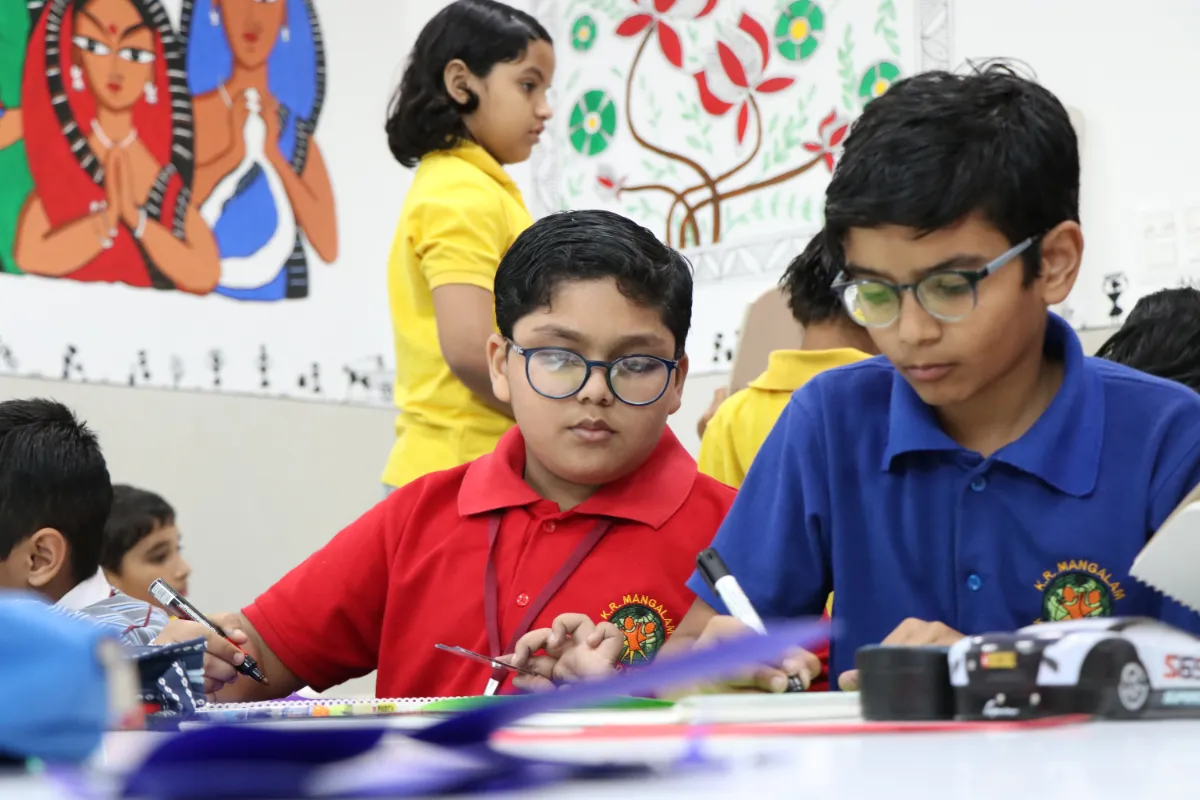
PERSONAL SOCIAL AND PHYSICAL EDUCATION (PSPE)
Our school is committed to promoting the personal, social, and physical well-being of students. PSPE is achieved through the holistic development of concepts, knowledge, and attitudes that contribute to overall well-being. The activities that surround PSPE at KRM cover aspects of students’ experiences at school and beyond. Consequently, it leads to self-exploration, strengthens interpersonal relationships, and promotes an active and healthy lifestyle. The teachers and parents support the school’s philosophy to help nurture the learners with character and competence.
(a) Contributing to the society
The students are actively involved to work on various social experiments to develop a relationship with the society and the world around them. The surveys and awareness drive conducted by the students broaden their thought processes and make them responsible custodians of future generations.
(b) Group counseling sessions
The school counselor conducts weekly evening sessions in small groups to provide the necessary space for the students to share their thoughts. It is an unbiased space where students can express their emotions and feelings without any hesitations. Meditation and mindfulness sessions are conducted to provide a positive outlook to the students. These practices foster resilience and build self-control in young learners.
(c) Physical Fitness
Physical Education at our school is far more than just participating in sports and games. Its purpose is to develop a set of skills and attitudes together. Regular exposure to all kinds of physical learning experiences like yoga, table tennis, lawn tennis, basketball, skating, chess, and life skills enables students to make informed choices throughout their lives.
Considering that students learn best when they are actively engaged, we provide them with ample opportunities to enhance their physical and social skills through structured play (throwing and catching), playing Simon says (following instructions), board games (turn-taking skills), and many more. Students also participate in physical activities like hopping, jumping, sliding, running, kicking, and skipping.
(d) Sharing is caring
The students learn to nurture relationships with others by sharing ideas during various class activities, celebrating success, and offering and seeking support from their teachers and peer group. It is an integral part of teaching and learning. The development of overall well-being is defined through three common strands – identity, active learning, and interactions. Therefore, every facilitator at KRM has the responsibility to support students in their personal, social, and physical development through all learning engagements.
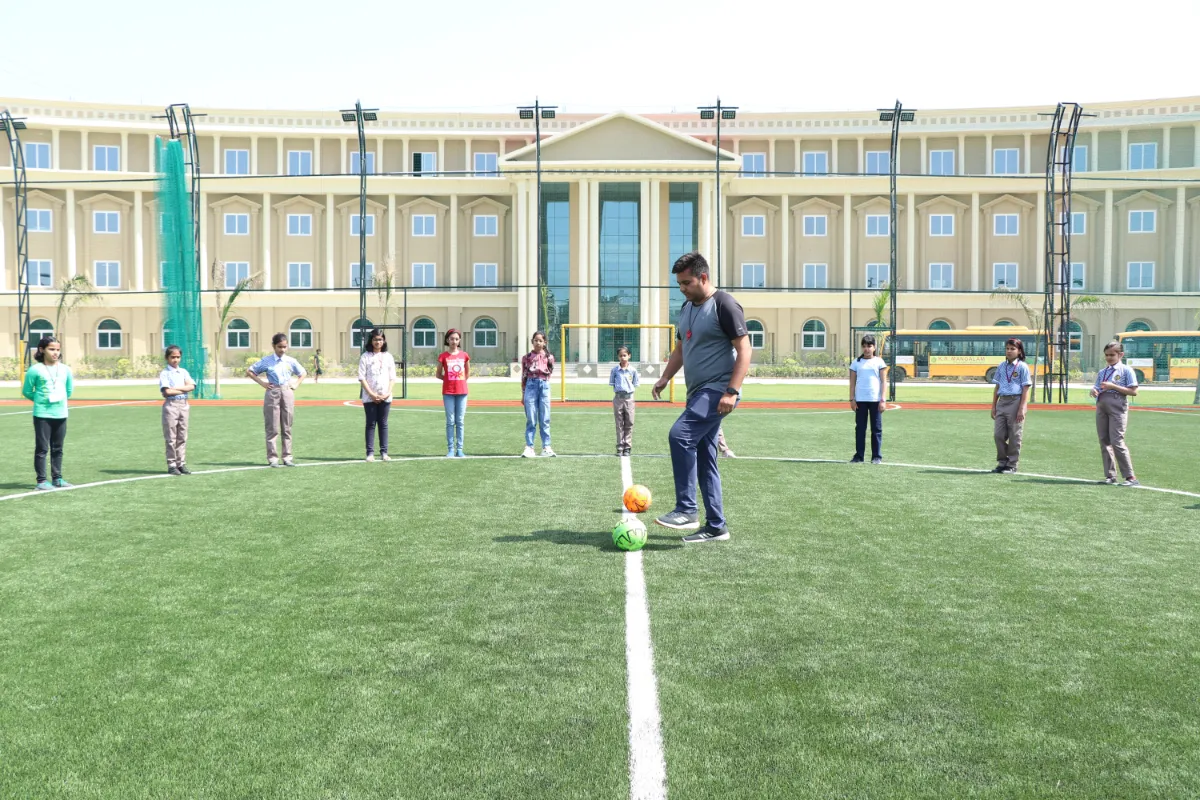
(e) Happiness Curriculum
The happiness curriculum aims to develop self-awareness and mindfulness in learners. In addition, it inculcates communication skills, critical thinking, and analytical skills, helping them communicate effectively and resolve real problems by applying life skills. As a part of the happiness curriculum class, students undergo meditation, value education, and mental exercises.
(f) Awareness Sessions by Peers
Peer education is an effective way to put a message across young learners. Students of Grade VIII conducted a session on the topic ‘Dignity of Labour’ to sensitize their fellow students. The topic was chosen on the occasion of Labour Day to emphasize the importance of labor/helpers in our society.
Students presented examples of numerous helpers and how our lives would come to a standstill without their assistance. The session demonstrated the poor living conditions of such helpers and the way they are treated by others. Students were acquainted with the role of helpers and the respect they deserve for the work they do. This session not only contributed to developing a sense of responsibility towards helpers but also contributed towards the social and emotional growth of students as individuals who value humanity as an essential virtue of life.
STEAM
As Andrew Miller, an educator said, “Your students can learn the arts as well as learn through the arts.”
STEAM is a curriculum based on the idea of educating students in five specific disciplines – Science, Technology, Engineering, Arts, and Mathematics. It is an interdisciplinary and applied approach, integrating all disciplines into a cohesive learning paradigm based on real-world applications.
STEAM education at KRM produces creators, thinkers, problem solvers, doers, innovators, and inventors. It is an interactive teaching technique that amplifies the engagement level among students through the labs like Robotics, Mathematics, Science, and Arts, facilitating them to better learn the mechanism and grasp the concept. STEAM teaches to be innovative in the digital age and prepares students to represent themselves confidently on global fronts.
Few activities related to STEAM are:
- 1Artificial Intelligence and Creativity
- 2Science Exhibition
- 3Logical- Mathematical Intelligences
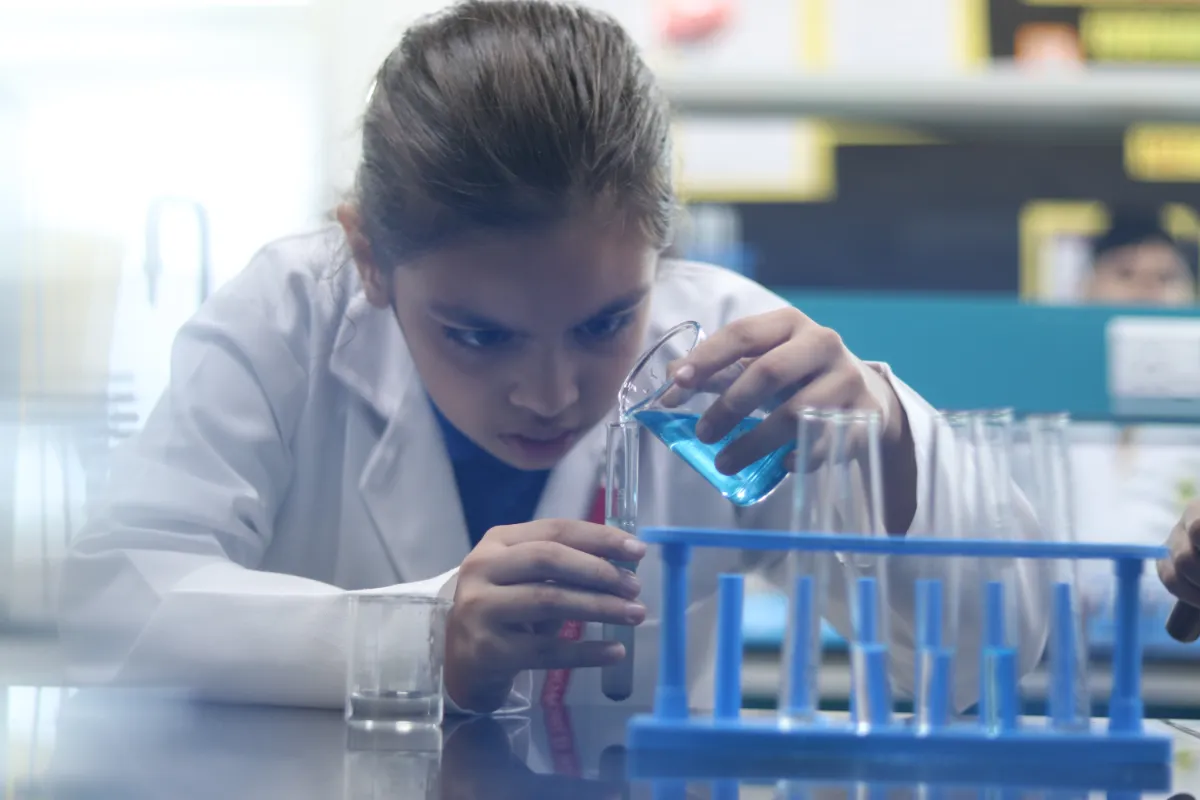
Handicrafts:
The Vocational Course in Handicrafts with Paper Mache and Jewelry Designing is a comprehensive program designed to provide participants with practical skills and creative insights into two distinct yet closely related fields – paper mache and jewelry designing. This course aims to nurture artistic talents, foster craftsmanship, and equip individuals with the knowledge and techniques necessary to excel in these traditional and contemporary crafts.
Course Objectives
- 1. Introduce students to the rich history, cultural significance, and evolving trends of handicrafts, paper mache, and jewelry designing.
- 2. Develop proficiency in fundamental techniques, tools, and materials used in paper mache and jewelry designing.
- 3. Encourage innovative thinking and design creativity through hands-on projects and assignments.
- 4. Cultivate entrepreneurship skills by providing insights into marketing, branding, and selling handicrafts and jewelry.
- 5. Foster an appreciation for sustainability and ethical practices in both crafts.
This vocational course consists of two major parts
- 1 Paper Mache
- 2 Jewellery Designing
- Paper Mache is a versatile handicraft technique that involves shaping and molding paper into various objects using a mixture of glue or adhesive and water. This form of handicraft is popular for creating decorative items, masks, sculptures, and even piñatas. The process begins with tearing or cutting strips of paper, which are then dipped in the adhesive mixture and layered onto a base structure. Once dry, the Paper Mache can be painted, decorated, and embellished to create stunning and unique crafts.
Jewellery design is the art of creating and crafting wearable adornments using various materials such as precious metals, gemstones, and other embellishments. It involves sketching and creating designs that capture the essence of beauty, style, and personal expression. JeweLlery designers must possess a keen eye for aesthetics, knowledge of different techniques and materials, and the ability to transform ideas into tangible pieces of wearable art. They play a vital role in shaping trends and creating unique pieces that reflect individual tastes and preferences.

